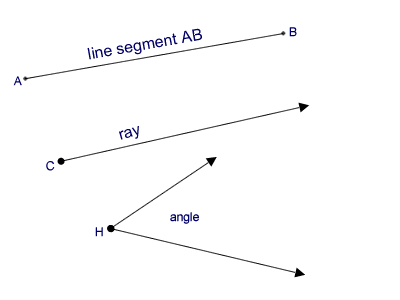The term opposite rays is a useful concept in geometry. It refers to the pairs of lines that are pointing in opposite directions but always have a common end point. These rays are called ZX and ZY. They are made up of two straight lines that are joined together through the common point Q. Here are some examples of how opposite radii can be used in the world of geometry. The first of these ten rays forms a pencil.
Opposite rays geometry definition
The name ray is based on the direction of extension. Thus, the first endpoint of a ray is named “endpoint” and then the second endpoint is given as a direction. Hence, a tangent to a line is known as an arrow, while an oblique arc is the oblique axis. The radii of an oblique ray are opposite to each other.
The oblique rays define the angle of a triangle. A triangle is a union of two rays. A right-angled triangle is an example of an angle. A line that extends to the same direction is called an oblique angle. In addition to angles, rays also form sides of a circle. They are named based on their directions and endpoints. In addition to defining angles, rays define lines that cross intersections.
The Definition of Opposite Rays in Geometry
The definition of a ray is very simple. A ray is a line that has a starting point and ends at an opposite point. It extends in one direction and has a single endpoint. Because of this, it is impossible to measure a ray’s length. Instead, it is named according to its endpoint. As long as the two ends are close enough to each other, it is a ray.
A ray is a line that has a start point and extends in one direction. Its endpoint is the point that defines its endpoint. Its direction is the opposite of its starting point. Its name is a ray. A ray is defined as the union of two lines. In geometry, a ray is a line between a point and a line. The intersection of a ray is a tangent.

A ray is a line. It is a section of a line. A ray is a line that extends in one direction. A ray is a segment of a line. A ray is one end of a line. The endpoint is the vertex of an angle. Its endpoint is called a ray. It is a tangent. The ray has a point at its center.
A ray has a beginning point and an endpoint. It extends in a single direction and does not have two points. A ray is a line that has a single point. It extends in a single direction. A ray is a tangent. It has the same endpoint as a tangent. However, it may be opposite to another ridge. This type of ray is not a symmetrical ray.
A ray is a line that extends in one direction and has a start point. It cannot extend in both directions. A ray starts at a point and ends at a different position. Its endpoint is always on a ray. A ray is an arrow that has two ends. A ring has three segments, one ray extends to four sides. A ray can be long or short, depending on its shape and direction.
Line with a start point and an endpoint. It extends in one direction and has only one endpoint. A ray’s length is a measurement of the ray’s direction. In other words, the ray’s length is a tangent to a parallel line. In a plane, the arrow is a tangent. Its tangent is a spline. A ray’s kink is a spline.
Examples of Opposite Ray Geometry
The opposite ray geometry is a useful concept in geometry. It refers to pairs of lines that share a common point (or endpoint), and go in the opposite directions. A pencil is a great example of an opposite ray. A pencil can be drawn using two opposite rays. Similarly, a triangle can be shaped by using a pair of opposite rays.
A ray has a beginning point and an end point. The first point of the ray is called the “endpoint”, and the second point is the direction. In geometry, a ray can be tangent to a line or be oblique. In physics, a ray can be either oblique to a line, or it can be parallel to another line. Both directions may be the same, and their radii may be opposite.
Another example is a line segment that has two points. One of these ends is at the middle of the line segment, and the other endpoint is at the opposite end of the line segment. The opposite rays are often named differently. A ray pointing to the right, for example, is named MB, while one pointing to the left is called OG.
A ray is a line with a starting point and an endpoint. In physics, a ray is defined as a line that extends in one direction from one point to another. The point at the endpoint of a ray is the tangent of the line. Similarly, the ray that extends in the opposite direction from a point is the opposite ray.
Another example of opposite ray geometry is an arrow. A line has a starting point and a stop point. Moreover, a ray can extend in both directions. It can also be called a half-line. If the ray is parallel to another line, it is called a parallel ray.

